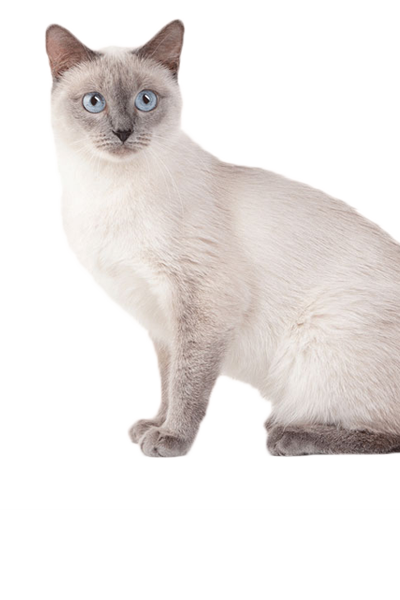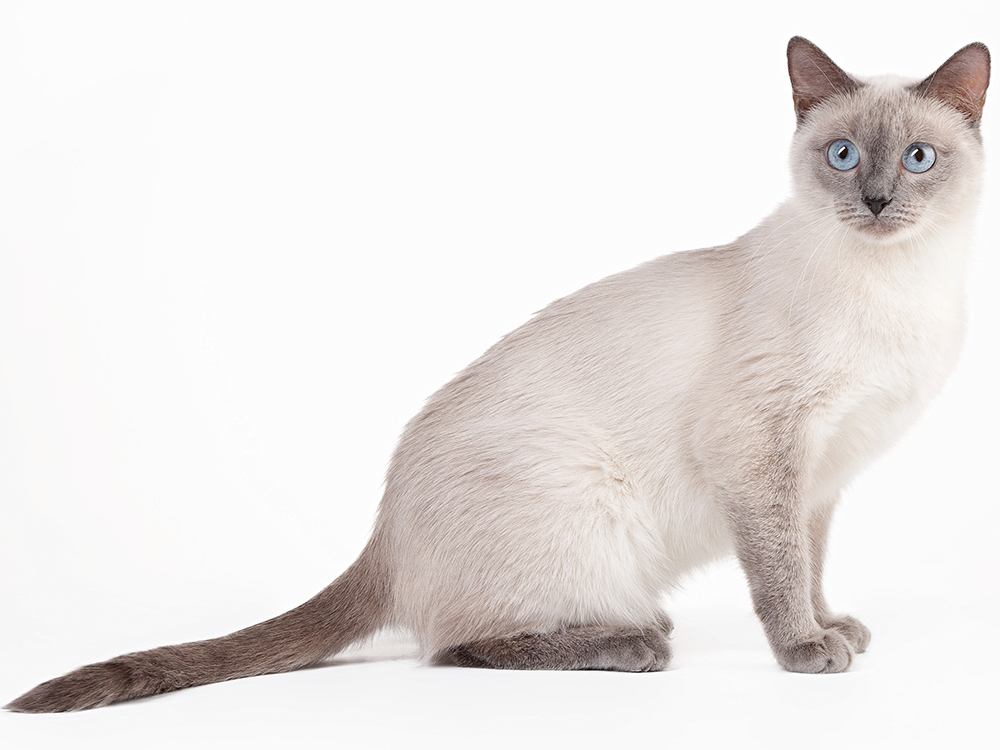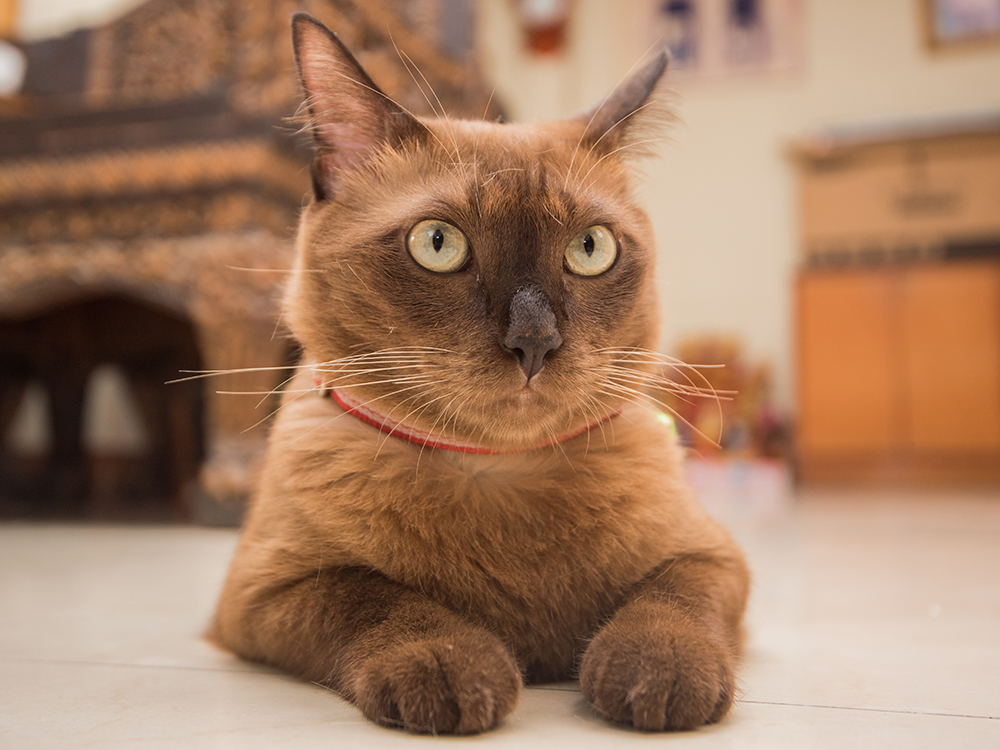
Thai Breed Pictures
Vital Breed Stats
| Weight: | 3 - 6 kg M | 3 - 6 kg F |
| Life Expectancy: | 12 - 15 years |
Breed Characteristics
| Size: |  |
| Grooming: |  |
| Trainability: |  |
| Good with Children: |  |
| Good with other pets: |  |
| Affectionate: |  |
| Active Level: |  |
Give a thumbs up if you love the Thai

0
More About the Breed
History
From an unexpected circumstance of a Korat breeding came a litter having dark-coloured spots on the ‘points’ (ears, face, legs, paws, and tail). At first, it was still considered as part of the Korat. However, in 1989 Korats from the UK birthed a litter with unusual colours of odd white and ‘pink’. And in the successive years, more kittens were born having similar unusual patterns for a Korat. Breeders soon found out that these are the product of recessive genes that used to be dormant in the Korats. The mentioned colours are the result of the Thai Lilac and the Thai Blue Point that we can see nowadays. Breeders turned their attention to producing a much healthier gene pool with this type of kittens.
The Thai cat gained popularity for its charming looks and playful temperament. It earned recognition from a number of cat registries. It was recognised as a new breed in the World Cat Federation (WCF) in 1990 and by the European Group Cat Association (EGCA) in 2004. The International Cat Association (TICA) gave its first recognition level in 2007.
Appearance and Grooming
The Thai is a medium-sized feline that can weigh around 8 to 10 lbs. The female appears daintier than the male, who is heavier. However, a female should not be undersized because regardless of its gender, the Thai cat has a firm and muscular body. It also has a medium-sized tapering tail to a rounded tip.
At the feline’s frontal view, a heart-shaped head with a width between its eyes. It has a well-developed muzzle with a short nose slightly curving downward. The ears are large with rounded tips, completing an alert look. The Thai cat’s coat is short to medium in length and appears glossy, close-lying coats. It has a very little undercoat. The Thai cat has two colour classifications:
- Thai Blue Point has an off-white body colour. Aside from the shading on the points, it can also have shading on the back. Its eyes are brilliant blue.
- Thai Lilac, true to its name, is dressed in a lilac coat with silver tipping. Its eyes are vivid in green colour.
Temperament and Intelligence
The Thai cat is vocal and expressive. It loves to follow its owner around the house and wants to get involved in the activities of its human family. As such, it does not like to be left alone. This is a feline best suited in a family where it will have at least one person as a company. It craves for human attention and is considered as emotionally high-maintenance. The Thai cat is a perfect choice for those who are looking for a pet companion.
This breed is intelligent and inquisitive. It likes to explore its environment. It can adapt well as an indoor pet; however, the area should be escape-proof. Being an indoor feline, it should be given attention and activities to engage in.
Nutrition and Feeding
The Thai cat should be given a nutritious diet that satisfies its nutritional needs. It should be consistently given the same food following the same meal schedule. If there are changes to its diet, those must be done gradually to prevent digestive problems.
The serving portions should depend on the cat’s weight, age, and activity level. Its diet must include at least 25 per cent protein and just 5 per cent carbohydrates.
Health and Exercise
The Thai’s life expectancy is more than fifteen years. It is amongst the healthiest cat breeds in the world as it is not known to be affected by hereditary health issues.
However, there have been cases of Thai cats affected by GM1 and GM2 gangliosidosis. As such, it is necessary to check the Thai cat breeder’s credentials before acquiring one.
It is important that this feline gets enough exercise and its diet managed well to prevent it from becoming overweight. Being an intelligent breed, it should be provided with toys and activities that will also challenge its mental abilities.
Cost of Ownership
A pedigreed Thai kitten will cost £500 or more. Average insurance expenses would cost £16 (basic) to £29 (lifetime) monthly. Food costs may range from £15–£20 each month. For vaccinations, boosters, annual checks, and other veterinary costs, pet care costs may add up to more than £600 each year.
A Thai cat owner will spend about £40–£60 per month. The insurance costs can also affect this estimate. For its lifetime (15+ years), the expenses can go as high as £7,200. This estimate does not include the initial costs incurred in acquiring this cat.
Thai Breed Highlights
- It lightly sheds; hence, it requires less grooming.
- It seeks human interaction and attention.
- It is a perfect choice as a close companion as it tends to follow its owner around the house.
- It can adapt well to apartment living.









